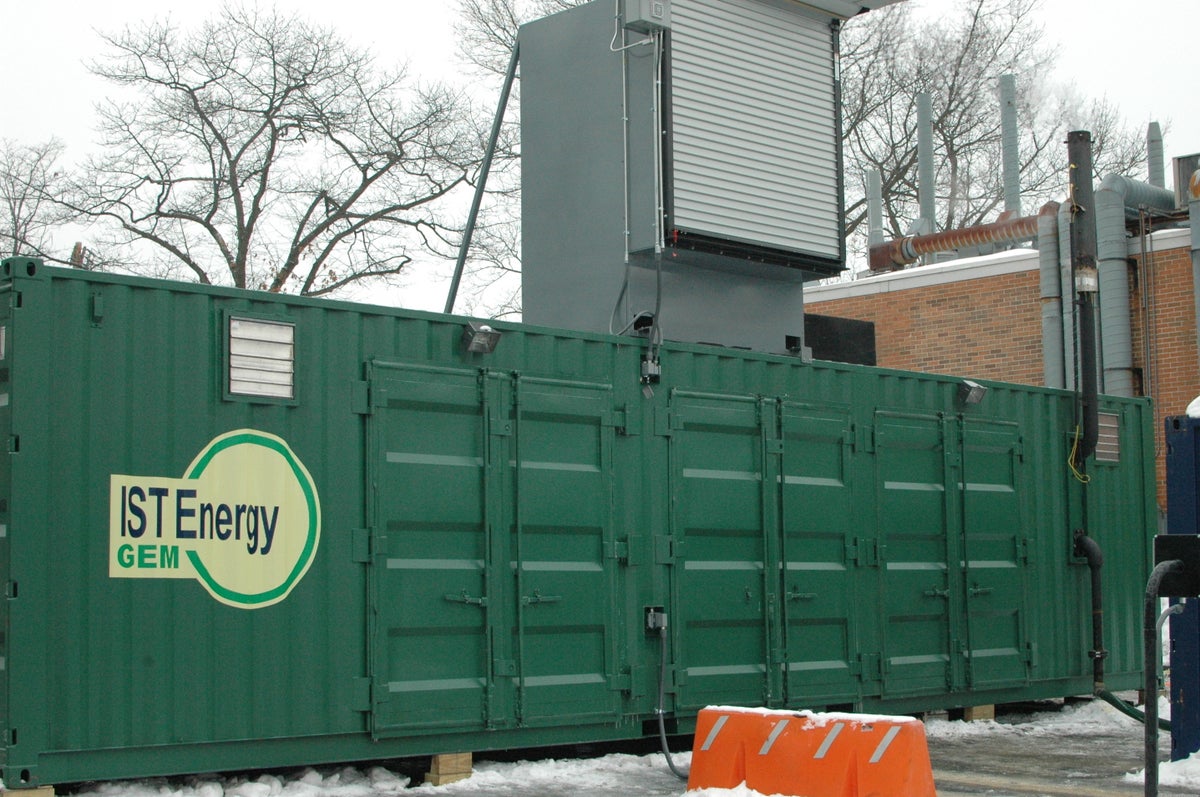Making gas from trash in the office parking lot (photos)
IST Energy is shipping its first Green Energy Machine to the Edwards Air Force Base, which will make electricity and heat from tons of trash each day.

Ready for deployment
WALTHAM, Mass.--Two years after showing off a prototype, IST Energy is ready to ship out the first demo unit of its Green Energy Machine to Edwards Air Force Base in Southern California. The machine uses gasification, rather than combustion, to turn garbage into electricity and heat. The gas that it produces can be used in a slightly modified natural gas engine or a diesel generator with some diesel to make electricity. The gas is fed into a boiler to make heat, and heat from the machine can also be captured and used to heat a building.
See related article: Air Force base to gasify waste for energy.
Pelletized waste
There's a mechanism to shred waste and convert it into these pellets, which act as the starting fuel for the gasifier. The pellets are a combination of food waste, paper, and plastic packaging. Metals, which have no energy content, are sorted out. The machine can convert 95 percent of the waste into energy and the ash is approved for landfills, according to the company.
Inside GEM
The heart of the Green Energy Machine is the gasifier, the cylindrical vessel behind the yellow pelletizer. Gasification heats up material to the point where the molecular bonds break down, leaving a gas of mostly carbon monoxide, hydrogen, and methane. Waste goes in a hopper, is dried and shredded, and then turned into pellets that are fed into the gasifier.
Gas-fed generator
The output of a gasifier is called syngas, or synthetic gas. That is burned in a 100-kilowatt diesel generator, seen on the right, or a modified natural gas engine, on left. The tube running from the Green Energy Machine is piped to the generator. It has been powering all the electricity of the office building of IST Energy since September.
Compared to hauling trash to a landfill, the GEM has far fewer greenhouse gas emissions and is far cleaner than burning waste for energy, according to IST Energy.
Control point
The unit going to Edwards Air Force Base is heavily instrumented with sensors and is connected to the Internet for remote monitoring and diagnostics. The software also lets people monitor how much heat and power it is producing.
Heat ducts
The ducts coming off the side are used for moving heat, which could be connected to a building's heating system. The hot air is made with a heat exchanger connected inside the Green Energy Machine. Engineers at IST Energy were using the ducts to heat a tent but the snow knocked that out of commission. Also visible on the back of the unit are the gray panels of the control units and, on the far left, an automated system for removing ash.
Scrubbers
The GEM uses a lot of off-the-shelf components, such as an air scrubber, which removes particulate matter from the syngas. These are the filters that go into the scrubber. IST Energy said it expects to meet the air quality standards for the generators and natural gas engines that its fuel will be used in.

